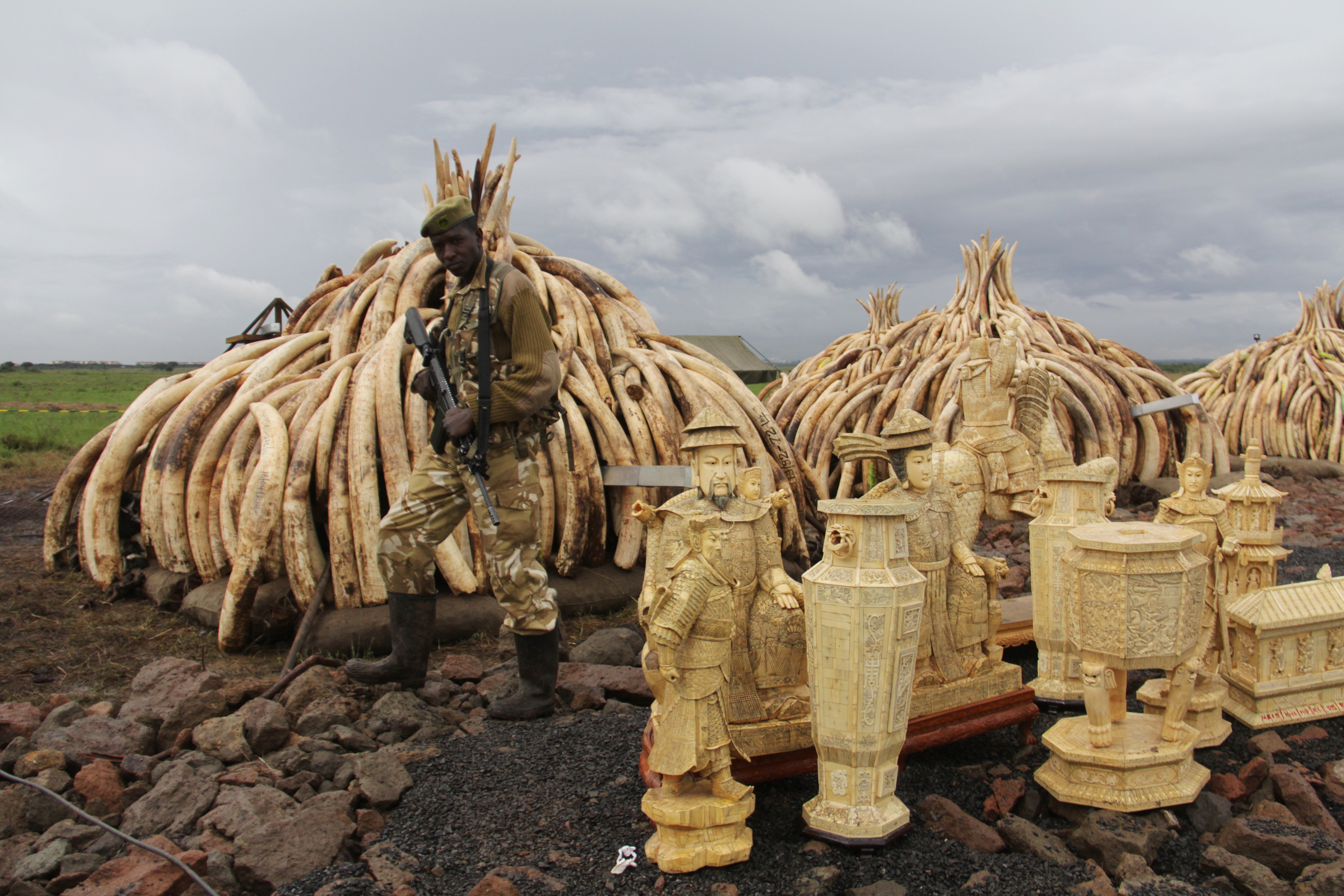
On an empty field inside the park at the KWS, ten stockpiles of ivory lay next to each other/MIKE KARIUKI
NAIROBI, Kenya, Apr 25 – With only four days to go before the burning of the largest ever elephant ivory and rhino horns, different organisers braved the heavy rain in Nairobi on Monday for the final preparations for the day that has been recognised locally and internationally.
The ground was wet and muddy, but the organisers were present to ensure everything will be ready before Saturday.
Kenya Wildlife Service (KWS) Deputy Director in charge of Wildlife Conservation Patrick Omondi was one of the people working tirelessly to oversee the process that is intended to address Kenya’s biggest threat to its wildlife which is the heart of its tourism.
“Our preparations are now at advanced stages. We will have 11 piles. We now have ten and the eleventh one which will be with the rhino horns will also be ready,” he stated.
On an empty field inside the park at the KWS, ten stockpiles of ivory lay next to each other.
From afar one would think it is a beautiful site.
But on proximity, the stench from the neatly arranged piles was like a representation of the gamut of destruction that Kenya suffers due to illegal trade of elephant ivory and rhino horn.
Inside some of the piles were skins from animals such as monkeys, pythons, leopards, crocodiles and other animals.
They were symbolically put together with the burning of rhino and elephant ivory because hunting in Kenya is also illegal.
“We are also torching all trophies, skins from different animals because hunting was declared illegal in Kenya in 1978.”
Saturday will be a day that Kenya will symbolically attest to the world that poaching is illegal and destructive to the social and economic well-being.
“This ivory is not medicine. Our people don’t sleep just because people want to kill a seven tones animal to make a necklace, a rubber stamp and to make these gods here (pointing at carvings made from ivory),” Omondi regretted.
“It is a very historic day. We are showing the world that ivory should be in the living elephant and rhino. It should not be out here in the black market,” he added.
Tourism is the heart of Kenya’s economic pillar where wildlife is the main contributor.
Elephants and rhinos are spectacular creatures that fall within the class of the ‘big five’ which comprises of lions, leopards and Cheetahs.
Come Saturday, 105 tonnes of elephant ivory and rhino horn will be reduced to ashes to symbolise to the world that killing the animals is illegal and that indeed their ivory and tusks are valueless.
It is with this acknowledgement that Kenya will be joined by the rest of the world including Heads of States, world environmentalists, artists and musicians and people of all walks to voice its condemnation and commitment to defend and shield its unique national heritage of its key animals.









































